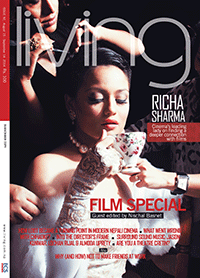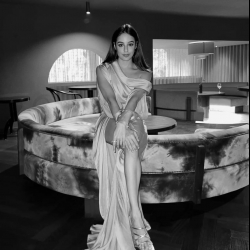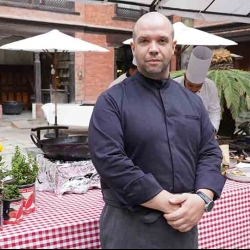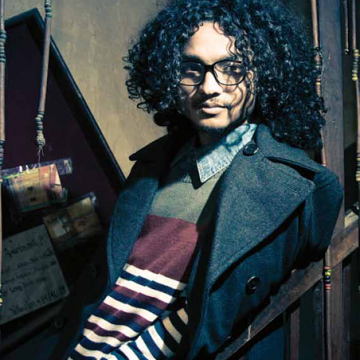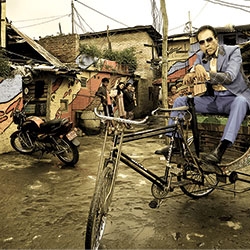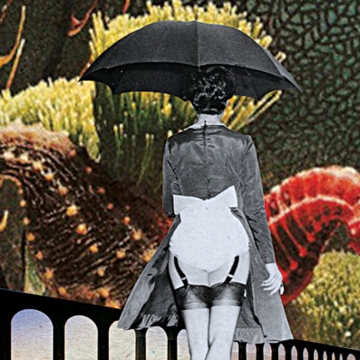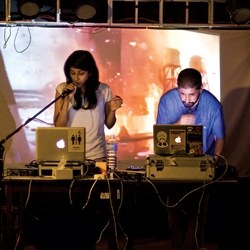
AMOGHASIDDHI (2012): One of the five wisdom Buddhas is portrayed in traditional paubha style in the background. At the forefront is his new artistic style to show the evolution from the old to the new.
(Collection of Bodhisattva Gallery)
Creativity comes from a conflict of ideas and the desire to do something different. Our traditional art has been passed down through generations; to be studied, followed and replicated according to traditional methods and guidelines. For hundreds of years, paubha art flourished through rituals and religious philosophy, but the artists had limited artistic freedom as they had to strictly follow the prescription of the priests and patrons, and rendered one-dimensional portrayals of deities for the sole purpose of worship or to depict a particular religious event.
Our traditional art is simply fascinating; immersed in deep philosophy and intricate artistry, but nevertheless, anything that does not evolve with time eventually loses charm. Such was the case with paubha art. It is exquisite and enthralling but with no experimentation, it had become stagnant.
In the 1940s, artist Siddhi Muni Sakya brought in a wave of two-dimensional paubha that reflected the aesthetic of black and white photography – a significant change after hundreds of years. On the other hand, Mukti Singh Thapa brought back the 13th century Newar style of paubha in the 80s, and made original compositions. The 90s brought in a fresh outlook with deities painted in a style best described as “realism” - lithe bodies, humane expressions, demonstrative eyes, and emotional and sensual gestures. Uday Charan Shrestha initiated this neo-traditional movement and Samudra Man Singh took it to greater heights, popularizing paubha art among different generations; making it emotive, alive and relatable. Both artists added further value to paubha by painting jewelry in meticulous detail. The paubha medium has made remarkable progress since its dawn.
The journey of Samudra Man Singh can be traced from his early days of creating protocol-based art pieces to the genesis of his three dimensional, contemporary style paubhas. The philosophy behind his style is that no generation is interested in art in quite the same way as the previous one; each generation has their own demands and preferences. The present generation needs to see progress and evolution.
The ‘Amoghasiddhi’ is an exact portrayal of his belief. On the wall lies an old, faded vintage painting of the traditional style, in front is its new progressive form – a three-dimensional carved body, with an angular face and calm expressive eyes. Maintaining the core religious features of hand mudras and religious elements in place, he dabbles with change to represent his unique artistic vision – a proof of Nepali art evolving with time.
The ‘Swayambhu Mahakala’ is another indication of static art coming alive. The stone sculpture reflects the spectacular freestanding stonework of the deity as it has been for hundreds of years, but when it comes out of its stillness; his hair rises with vivacious energy, his eyes are fierce, he is breathing with strong passion as if he wants to do something of great magnitude. Here again Samudra expresses his inner conviction of change; to express dynamism in art.

"SAPTALOCHANI"
Collection of Birendra Shahi
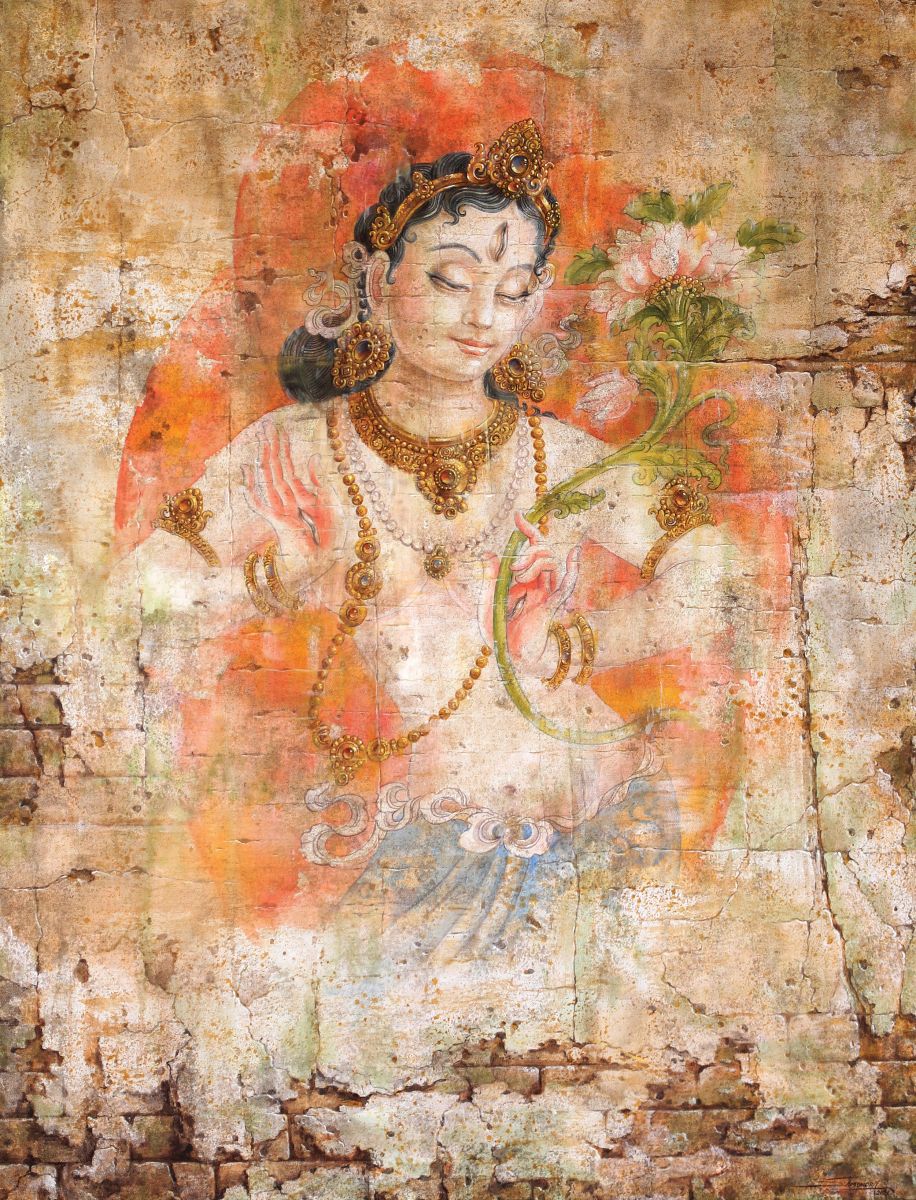
Collection of MONA, 2021
"Our traditional art is simply fascinating; immersed in deep philosophy and intricate artistry."
The 2015 earthquake was a turning point in Samudra’s artistic endeavor. Destruction in all aspects of life prompted many artists to express its tragedy. Samudra found his expression in dilapidated traditional Kathmandu houses. Frescoes painted hundreds of years ago were cracked and vanishing as many owners chose to demolish the houses and rebuild new ones. He touched upon the issue of our fading heritage and this series popularized another new genre – issue-based paubha. Here deities are not in the usual deep red, blue and green colors, but are faded and cracked. Unlike his trademark style, the details in jewelry too are not very intricate. The beauty is simply in the subject. The depiction of crumbling walls captured the hearts of many Nepalis as each of us could relate to having to let go of the past. But nevertheless, life goes on and takes new forms and Samudra’s earthquake series showed us this very essence of life – the cycle of creation, sustenance and destruction. After all, new art was created out of destroyed art.

SWAYAMBHU MAHAKALA (2014):One of the most well carved stone statues of the Kathmandu Valley is exquisitely depicted in the background and his live form comes upfront to show in art mediums.
Collection of Bodhisattva Gallery
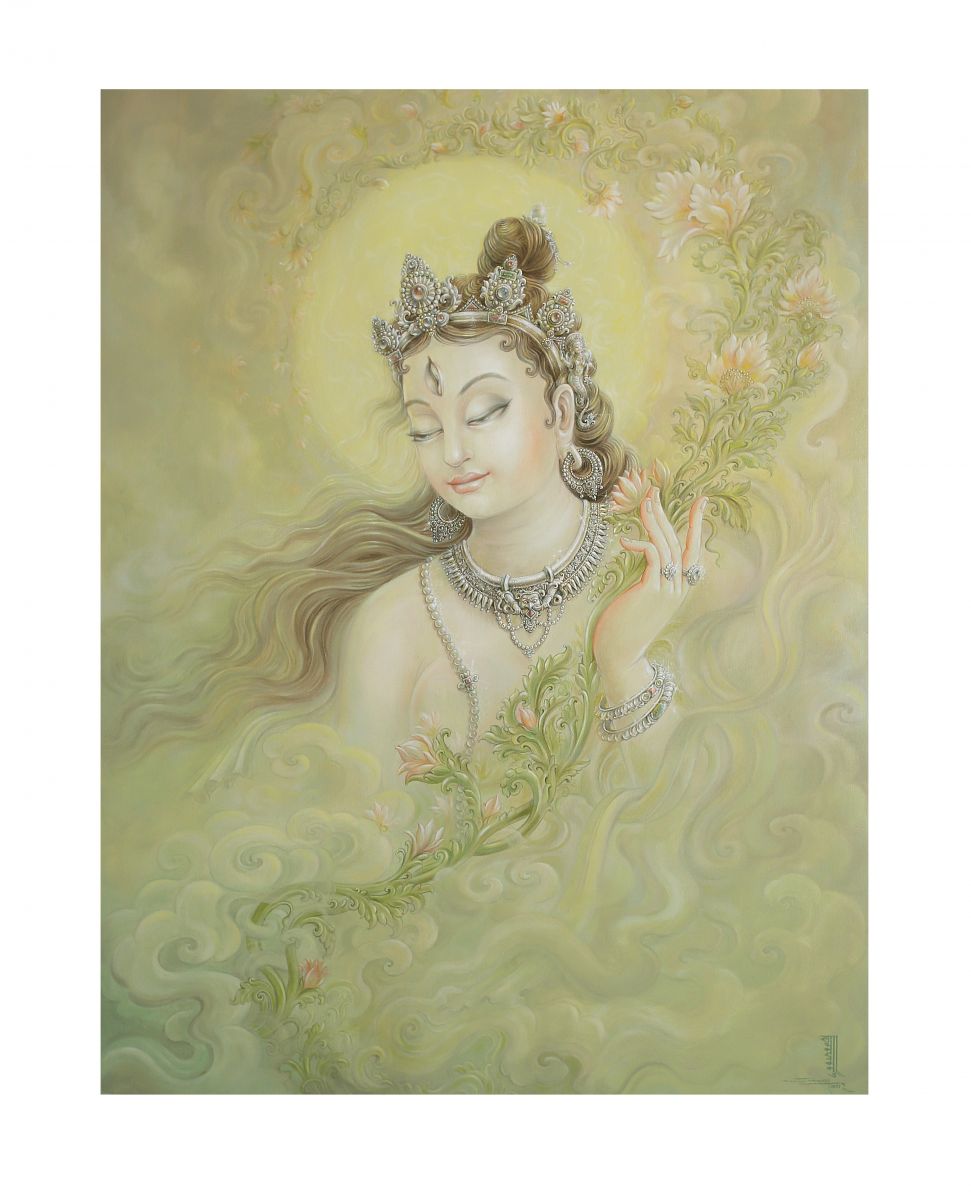
"WHITE TARA"
Collection of MONA, 2022
His portrayal of the white Tara series is a remarkable example of how his art has evolved over the years. The first one is painted in his own neo-traditional creation. The ornate throne and jewelry are truly mesmerizing with subdued colors. The whiteness of the Tara throws in the light along with his trademark faded background. The second is of his earthquake series and the third is the latest one attempting to give a global appeal. At first glance, Goddess Tara reminded me of Sandro Botticelli’s ‘Birth of Venus’ – her flowing hair, soothing pale face and an innocent drop down look. We see the appealing aura of a woman who is the epitome of compassion. Here most paubha rules of painting a white Tara are set aside. The colors are a landmark change to white and cream, and the focus is on a free flow of expression and artistic freedom.
All paubha artists start from copying, imitating, and practicing. Then they go a step ahead in visualizing. Some prefer to stick to and master the heritage while others who feel stifled in the clutches of tradition go further and innovate. Samudra’s journey represents a part of the nation’s history in art evolution – an artist who has catapulted the traditional sphere to contemporary appeal and the one that gave a global platform to our art. What next for this national treasure who is a master in combining the legacy of the past with the innovations of the future? Time will soon reveal from where, when and how his next inspiration will come.

